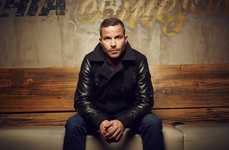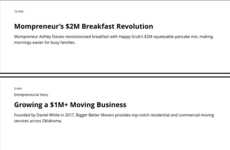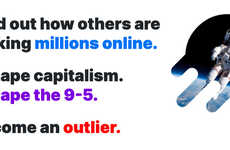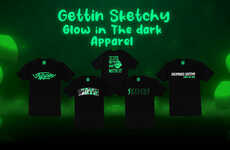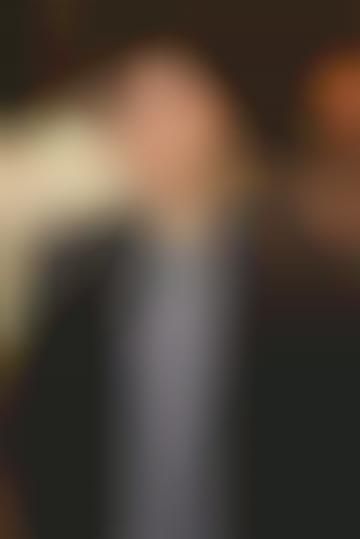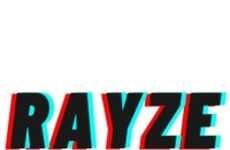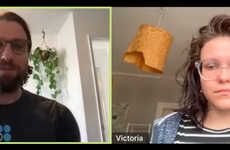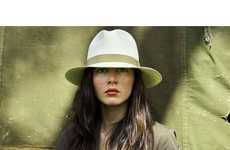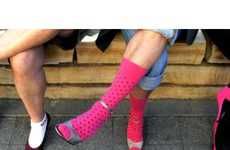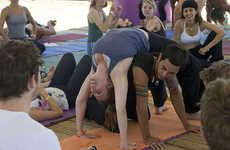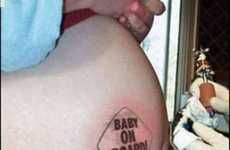
Jessica Marcel — December 29, 2009 — Business
References: markbao
Think back to your senior year of high school. What were you doing? Planning for college? Chasing girls? Dealing with a serious case of senioritis? Chances are what you weren’t doing was creating a name for yourself in the world of entrepreneurship.
But that is exactly what 17-year-old Mark Bao is doing. He’s been singled out as an up-and-coming technology entrepreneur, and he isn’t even done with high school. Trend Hunter wanted to know what makes this boy genius tick.
14 Questions with Mark Bao
1. How did you get involved in entrepreneurship and what motivates you to continue?
I started being involved in entrepreneurship in 5th grade, when I developed a software package that allowed students to word-process and manage their homework. I sold it on floppy disks.
My first real entrepreneurial experience started with DebateWare. I started off in entrepreneurship thinking I could make a lot of money. However, over the years, that has changed completely into a desire to change the world and (as Guy Kawasaki puts it) make change. Doing this is far more important than just making money, and is now my main focus along with non-profit work.
2. How significant are the topics of cool hunting and trend spotting in entrepreneurial endeavors?
Pretty significant, especially in areas such as marketing or product development. Spotting trends in what is new allows you to target customers and increase exposure and activity.
3. How do you define a trend?
A new or coming-back thing that many people are starting to connect to, that is gaining critical mass.
4. How do you define cool?
Something that serves a purpose in entertainment or usefulness that seems to be adopted by a number of people.
5. Do you need a culture of innovation to create something that is cool?
Definitely. A lot of things have already been done. Delving into a bit of innovation is certainly productive for developing a ‘cool’ thing.
6. What is the best way to create an infectious idea, product or service?
It really does boil down to finding a problem you or someone else has and solving it in an innovative way. That’s pretty much what will make sure you have a definite market. If it’s a big problem that applies to a big market, that’s even better.
7. What is the key to innovation?
Nobody really innovates without thinking *a lot.* I enjoy sitting down with a notebook and a pencil and seeing how I can solve a problem that could be turned into a business in an innovative way. To innovate on something, half of it is the execution, half of it is the big idea or the plan. If you spend the time, really innovative ideas come from it.
Oh, and there are no shortcuts.
8. What are the most important trends you see in the fashion industry?
Fashion? I can only really attest to men’s fashion, since that’s what I pay attention to most. The top trends seem to be a revival of cardigans and dress shirts and a bigger market for classier wear, instead of what has usually been the top, the t-shirt and jeans thing. I don’t think argyle is really returning yet, though.
9. What are your ambitions for your business?
Business nowadays is partly my vehicle for change via nonprofits. I plan on launching and making my main company, Avecora, succeed, since it’s the most important one I have. Avecora develops innovative mobile devices and networks.
10. What is an example of a time where you have thrown away an existing idea to force yourself to find something new?
I developed this product called Avecora AdSocial which was a really targeted ad system using Facebook for ad targeting, showing its ads on Facebook. I had to end it, since I launched it late because of school and the market was already hugely dominated, and I was just wasting time doing something I couldn’t, while I could have been doing something I could.
11. How do you reset yourself to be creative? Do you have any rituals?
I occasionally meditate or just simply party with friends when the work gets tough and my work ethic starts going down. Loud music is a great way to reset. There needs to be an excellent social-work balance in any creative individual (I’m also a bit of an artist, in traditional art like painting, and I play piano) because creativity, whether it’s working on business strategy, painting with oils, writing code, or playing the guitar, only exercises one part of the mind, and to keep it fresh in the other areas while relaxing that one part is extremely important.
12. Professionally, what do you want to be doing or studying in 10 years?
I want to be taking Avecora to the billions and work in non-profit work. My goal is $10 billion in net worth, of which I will donate 90% ($9 billion) to humanitarian aid, medical research, general research, and other areas, and invest 5% ($500 million) into developing startups. There’s more about me at http://iam.markbao.com/
13. What are your most important hobbies?
I think I have too many. I’m an entrepreneur and non-profit founder/advocate, ethical business and social responsibility advocate, journalist, writer, piano player, beginning guitar player, watercolor, oil, pastel, and pastel painter, photographer. I’m interested in fashion, reading, jewelry, research, dance, and the arts, and I write about the human condition, human nature, the meaning of life, and social interaction.
14. How does being a young entrepreneur set you apart from others in the field?
I have the opportunity to identify emerging trends and study them, like why Apple fans love Apple so much (myself somewhat included), and I have a head-start in being an entrepreneur, allowing me to learn things earlier. However, I’ve sacrificed a lot of my childhood and my future for it (my high school grades = meh), so I hope it’s worth it! :)
But that is exactly what 17-year-old Mark Bao is doing. He’s been singled out as an up-and-coming technology entrepreneur, and he isn’t even done with high school. Trend Hunter wanted to know what makes this boy genius tick.
14 Questions with Mark Bao
1. How did you get involved in entrepreneurship and what motivates you to continue?
I started being involved in entrepreneurship in 5th grade, when I developed a software package that allowed students to word-process and manage their homework. I sold it on floppy disks.
My first real entrepreneurial experience started with DebateWare. I started off in entrepreneurship thinking I could make a lot of money. However, over the years, that has changed completely into a desire to change the world and (as Guy Kawasaki puts it) make change. Doing this is far more important than just making money, and is now my main focus along with non-profit work.
2. How significant are the topics of cool hunting and trend spotting in entrepreneurial endeavors?
Pretty significant, especially in areas such as marketing or product development. Spotting trends in what is new allows you to target customers and increase exposure and activity.
3. How do you define a trend?
A new or coming-back thing that many people are starting to connect to, that is gaining critical mass.
4. How do you define cool?
Something that serves a purpose in entertainment or usefulness that seems to be adopted by a number of people.
5. Do you need a culture of innovation to create something that is cool?
Definitely. A lot of things have already been done. Delving into a bit of innovation is certainly productive for developing a ‘cool’ thing.
6. What is the best way to create an infectious idea, product or service?
It really does boil down to finding a problem you or someone else has and solving it in an innovative way. That’s pretty much what will make sure you have a definite market. If it’s a big problem that applies to a big market, that’s even better.
7. What is the key to innovation?
Nobody really innovates without thinking *a lot.* I enjoy sitting down with a notebook and a pencil and seeing how I can solve a problem that could be turned into a business in an innovative way. To innovate on something, half of it is the execution, half of it is the big idea or the plan. If you spend the time, really innovative ideas come from it.
Oh, and there are no shortcuts.
8. What are the most important trends you see in the fashion industry?
Fashion? I can only really attest to men’s fashion, since that’s what I pay attention to most. The top trends seem to be a revival of cardigans and dress shirts and a bigger market for classier wear, instead of what has usually been the top, the t-shirt and jeans thing. I don’t think argyle is really returning yet, though.
9. What are your ambitions for your business?
Business nowadays is partly my vehicle for change via nonprofits. I plan on launching and making my main company, Avecora, succeed, since it’s the most important one I have. Avecora develops innovative mobile devices and networks.
10. What is an example of a time where you have thrown away an existing idea to force yourself to find something new?
I developed this product called Avecora AdSocial which was a really targeted ad system using Facebook for ad targeting, showing its ads on Facebook. I had to end it, since I launched it late because of school and the market was already hugely dominated, and I was just wasting time doing something I couldn’t, while I could have been doing something I could.
11. How do you reset yourself to be creative? Do you have any rituals?
I occasionally meditate or just simply party with friends when the work gets tough and my work ethic starts going down. Loud music is a great way to reset. There needs to be an excellent social-work balance in any creative individual (I’m also a bit of an artist, in traditional art like painting, and I play piano) because creativity, whether it’s working on business strategy, painting with oils, writing code, or playing the guitar, only exercises one part of the mind, and to keep it fresh in the other areas while relaxing that one part is extremely important.
12. Professionally, what do you want to be doing or studying in 10 years?
I want to be taking Avecora to the billions and work in non-profit work. My goal is $10 billion in net worth, of which I will donate 90% ($9 billion) to humanitarian aid, medical research, general research, and other areas, and invest 5% ($500 million) into developing startups. There’s more about me at http://iam.markbao.com/
13. What are your most important hobbies?
I think I have too many. I’m an entrepreneur and non-profit founder/advocate, ethical business and social responsibility advocate, journalist, writer, piano player, beginning guitar player, watercolor, oil, pastel, and pastel painter, photographer. I’m interested in fashion, reading, jewelry, research, dance, and the arts, and I write about the human condition, human nature, the meaning of life, and social interaction.
14. How does being a young entrepreneur set you apart from others in the field?
I have the opportunity to identify emerging trends and study them, like why Apple fans love Apple so much (myself somewhat included), and I have a head-start in being an entrepreneur, allowing me to learn things earlier. However, I’ve sacrificed a lot of my childhood and my future for it (my high school grades = meh), so I hope it’s worth it! :)
Trend Themes
1. Youth Entrepreneurship - Being a young entrepreneur presents the opportunity to identify emerging trends and study them, allowing for early learning and innovation.
2. Cool Hunting and Trend Spotting - Spotting trends is significant in areas such as marketing and product development, as it enables targeting customers and increasing exposure.
3. Innovative Fashion Trends - The fashion industry is seeing a revival of cardigans and dress shirts, as well as a shift towards classier wear, presenting opportunities for disruptive fashion innovations.
Industry Implications
1. Technology - Youth entrepreneurship in the technology industry can lead to innovative mobile devices and networks that have a potential for disruptive advancement.
2. Marketing - Cool hunting and trend spotting play a crucial role in marketing, enabling businesses to identify customer preferences and design campaigns that resonate with audiences.
3. Fashion - The fashion industry is ripe for innovative disruption, with opportunities to introduce new styles, materials, and sustainable practices.
3.5
Score
Popularity
Activity
Freshness


